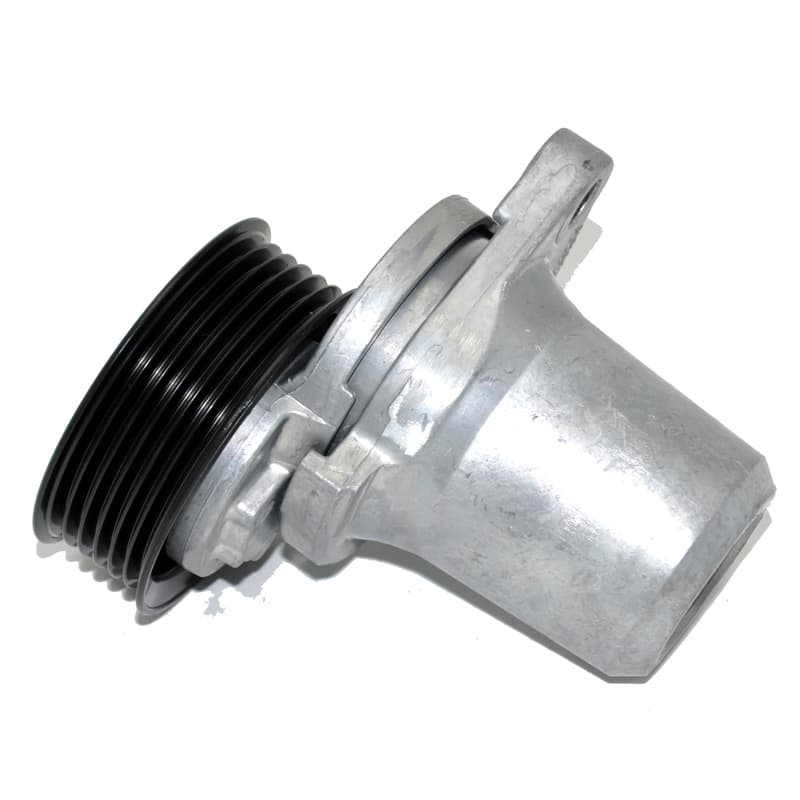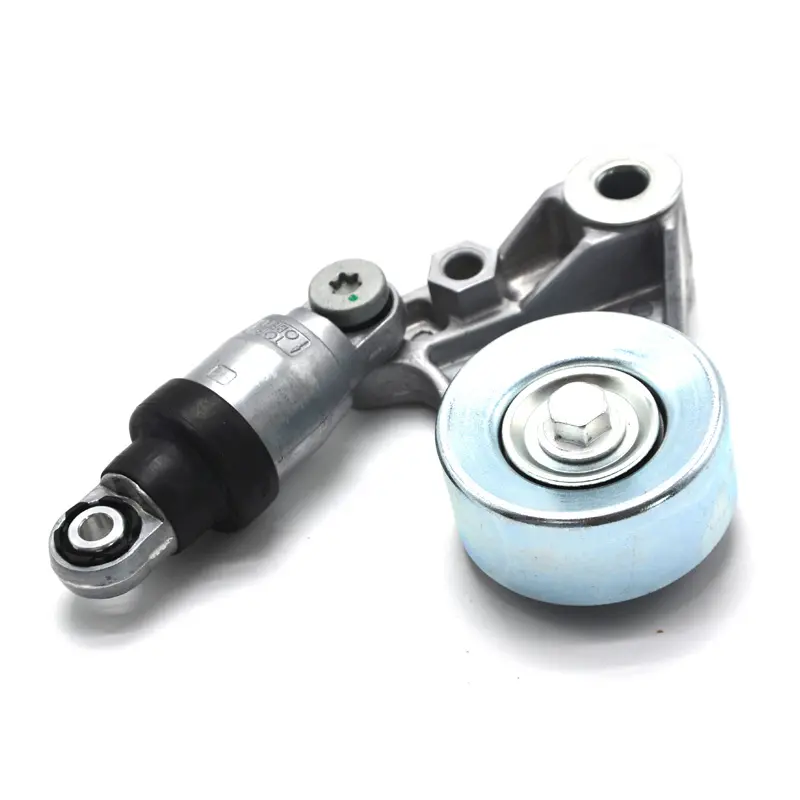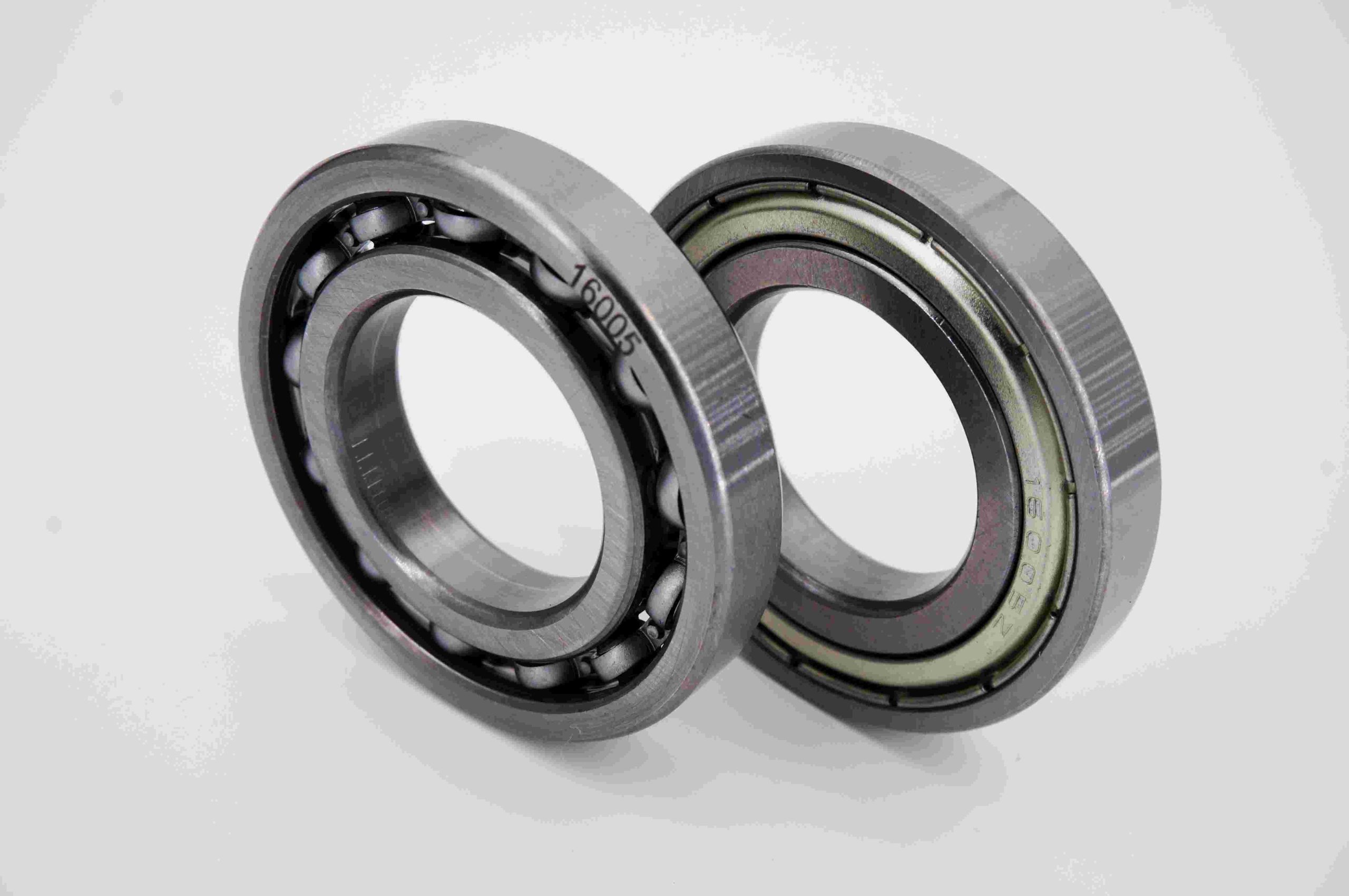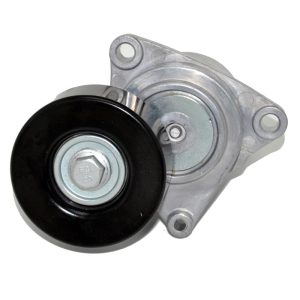Auto- ja tööstusmasinate valdkonnas on pingutus- ja tühikäigurataste roll väga oluline, kuid sageli tähelepanuta jäetud. Kuigi need komponendid on väikesed, mängivad nad erinevate süsteemide, eriti rihmamehhanismide funktsionaalsuse ja pikaealisuse seisukohalt olulist rolli. Mõistmine, mida pingutusmehhanism ja tühikäiguketta osad on, kuidas nad toimivad ja nende tähtsus on kriitilise tähtsusega igaühe jaoks, kes tegeleb mehaaniliste süsteemide hoolduse, remondi või projekteerimisega. Käesolevas artiklis käsitletakse nende komponentide spetsiifikat, uurides nende tüüpe, funktsioone ja mõju süsteemi üldisele toimivusele.
Põhitõed: Tensioner ja idleri rihmaratta osade mõistmine: Pinguturi ja rihmaratta osade mõistmine
Enne üksikasjadesse süvenemist on oluline mõista pingutus- ja tühikäigurataste põhimõisteid. Mõlemad komponendid on lahutamatu osa rihmamootoriga süsteemide nõuetekohasest toimimisest, mis on levinud automootorites ja mitmesugustes tööstuslikes masinates.
- Pingutusrullik: Pingutusrihmaratas on komponent, mis on ette nähtud rihma nõuetekohase pinge säilitamiseks rihmavõimelises süsteemis. Tavaliselt on see vedruga või hüdrauliliselt juhitav, mis võimaldab automaatselt reguleerida rihma kulumist ja pikenemist aja jooksul. Õige pinge säilitamisega tagab pingutusrihmaratas, et rihm töötab sujuvalt ja tõhusalt, vältides libisemist, müra ja enneaegset kulumist.
- Juhtrattarihmaratas: Teisalt on tühikäiguvõlli eesmärk teistsugune. Seda kasutatakse rihma suunamiseks või ümbersuunamiseks konkreetses suunas. Kuigi see ei aita kaasa pinge säilitamisele, tagab tühikäiguratas, et rihm liigub õiget rada mööda erinevaid mootori komponente, näiteks vahelduvvoolu generaatorit, veepumpa või roolivõimendi pumpa. Rihmarattad on tavaliselt fikseeritud asendis ja ei saa pinget reguleerida.
Pinguti ja rihmaratta osade tähtsus
Nii pingutus- kui ka tühikäiguratta osad on rihmaga töötavate süsteemide tõhusa toimimise seisukohalt kriitilise tähtsusega. Ükskõik millise komponendi rike või tõrge võib põhjustada olulisi probleeme, sealhulgas võimsuse vähenemist, mootori ülekuumenemist või isegi süsteemi täielikku rikkeid.
- Rihma õige pingutus: Pingutusrattarihma esmane ülesanne on säilitada rihma õiget pinget. Lahtine rihm võib libiseda, põhjustades jõukadu ajami komponentidele, samas kui liiga pingul olev rihm võib põhjustada rihma ja rihmarataste enda liigset kulumist. Pingutusrihmaratas reguleerib automaatselt, et hoida rihma pinge optimaalses vahemikus, tagades sujuva töö ja pikendades rihma kasutusiga.
- Vööndi suunamine: Rihmaratta roll rihma juhtimisel on sama oluline. Juhtides rihma õiget rada mööda, tagab rihmaratas, et rihm ajab süsteemi iga komponenti õigesti. Valesti suunatud või kahjustatud rihmaratas võib põhjustada rihma kõrvalekaldumist ettenähtud teest, mis võib põhjustada ebaühtlast kulumist, müra või isegi rihma täielikku rikkeid.
- Kulumise vähendamine: Nii pingutus- kui ka tühikäiguratastel on oluline roll rihma ja muude komponentide kulumise vähendamisel. Hooldades nõuetekohast pinget ja juhtides rihma õigesti, aitavad need rihmarattad jaotada koormuse ühtlaselt rihmale, vähendades koormust ja pikendades kogu süsteemi kasutusiga.
- Süsteemi rikete ennetamine: Rike kas pingutusseadme või tühikäiguratta osades võib põhjustada tõsiseid tagajärgi. Purunenud või kahjustatud rihmaratas võib põhjustada rihma libisemist või purunemist, mille tagajärjel võivad kriitilised komponendid, nagu vahelduvvoolumasin või veepump, kaotada võimsuse. Automootori puhul võib see põhjustada aku rikke, ülekuumenemise või isegi mootorikahjustuse. Tööstusmasinates võib rikutud rihmaratas põhjustada kulukaid seisakuid ja remonti.
Tüübid pingutusmehhanismid ja rihmaratta osad
On olemas eri tüüpi pingutus- ja tühikäigurattaid, mis on kavandatud vastavalt konkreetsetele nõuetele, sõltuvalt rakendusest. Nende tüüpide erinevuste mõistmine on oluline, et valida antud süsteemi jaoks õige rihmaratas.
- Manuaalsed pingutusseadmed: Käsipingid vajavad rihma õige pinge säilitamiseks perioodilist reguleerimist. Neid pingutusseadmeid kasutatakse tavaliselt vanemates sõidukites ja tööstuslikes masinates, kus automatiseeritud süsteemid ei ole teostatavad. Manuaalsete pingutusseadmete peamine eelis on nende lihtsus ja kuluefektiivsus, kuid need vajavad nõuetekohase toimimise tagamiseks regulaarset hooldust.
- Automaatsed pingutusseadmed: Automaatsed pingutusseadmed on kõige levinumad, mida kasutatakse kaasaegsetes sõidukites ja masinates. Need pingutusseadmed kasutavad vedruga koormatud mehhanismi, et säilitada rihma pidev pinge, kohandades automaatselt rihma kulumist ja pikenemist. Automaatpingutid on mugavamad kui käsitsi pingutid, sest nad vajavad vähe või üldse mitte mingit hooldust. Siiski võivad need olla kallimad ja nõuda keerulisemat paigaldamist.
- Hüdraulilised pingutusseadmed: Hüdraulilised pingutusseadmed on automaatsed pingutusseadmed, mis kasutavad rihma pinge säilitamiseks hüdraulilist rõhku. Neid pingutusseadmeid kasutatakse sageli suure jõudlusega või raskeveokite rakendustes, kus täpne pingete reguleerimine on kriitilise tähtsusega. Hüdrauliliste pingutusseadmete eeliseks on sujuvam töö ja parem rihma vibratsioonide summutamine, kuid need on ka keerulisemad ja kallimad kui muud tüüpi pingutusseadmed.
- Fikseeritud rihmarattad: Fikseeritud rihmarattad on kõige tavalisem rihmaratta tüüp, mida tavaliselt kasutatakse rihma suunamiseks kindlas suunas. Need rihmarattad on paigaldatud fikseeritud kinnitusse ja need ei liigu ega reguleeri. Fikseeritud rihmarattad on lihtsad ja usaldusväärsed, mistõttu sobivad need enamiku rakenduste jaoks.
- Reguleeritavad rihmarattad: Reguleeritavad rihmarattad võimaldavad rihma teekonda mingil määral reguleerida. Need pingutus- ja tühikäiguratta osad on paigaldatud klambrisse, mida saab reguleerida, et muuta rihmaratta asendit, võimaldades rihma joondamisel väiksemaid korrektsioone. Reguleeritavad tühikäigurattad on kasulikud rakendustes, kus on vaja rihma täpset joondamist, kuid need nõuavad hoolikat paigaldamist ja reguleerimist.
Üldised probleemid ja hooldusnõuanded
Nagu iga mehaaniline komponent, võivad ka pingutusseadme ja tühikäiguratta osad aja jooksul kuluda või tekkida probleeme, mis nõuavad tähelepanu. Nende komponentide pikaealisuse ja töökindluse tagamiseks on oluline korrapärane hooldus ja kontroll.
- Kulumine ja kulumine: Aja jooksul võivad pingutus- ja tühikäigurataste laagrid kuluda, mille tagajärjel suureneb hõõrdumine, müra ja lõpuks ka rike. Rihmarataste korrapärane kontrollimine kulumismärkide, näiteks vingumise, vingumise või lihvimishäälte suhtes, võib aidata probleeme varakult avastada, enne kui need põhjustavad tõsisemaid probleeme.
- Rihma paigutushälve: Rihma valesuunaline paigutus on tavaline probleem, mis võib põhjustada nii rihma kui ka rihmarataste enneaegset kulumist. Rihma valesuunalise paigutuse võib põhjustada kahjustatud või kulunud tühikäiguratas, paindunud klamber või vale paigaldus. Kõikide rihmarataste nõuetekohase joondamise tagamine on süsteemi tõrgeteta töö jaoks kriitilise tähtsusega.
- Pingutusseadme rike: Riknenud pinguti võib põhjustada lõdva või liiga pingul oleva rihma, mis põhjustab libisemist, müra ja liigset kulumist. Pinguturi rikke märgid on ebatavaline müra, rihma liigne liikumine või pingutusmehhanismi nähtavad kahjustused. Riknenud pinguti kiire väljavahetamine on oluline, et vältida süsteemi edasist kahjustamist.
- Tavaline asendamine: Pingutus- ja tühikäiguratta osad, nagu ka muud kuluvad komponendid, tuleks ootamatute rikete vältimiseks korrapäraselt välja vahetada. Tootja soovitatud väljavahetamise ajakava järgimine ja kvaliteetsete varuosade kasutamine aitab tagada süsteemi pikaealisuse.
Kokkuvõte
Pingutus- ja tühikäiguvõlli osad võivad olla väikesed komponendid, kuid nende rolli rihmamootoriga süsteemide tõhusas toimimises ei saa ülehinnata. Hoides rihma õiget pinget ja juhtides rihma õiget rada mööda, aitavad need rihmarattad tagada mitmesuguste mehaaniliste süsteemide sujuvat ja usaldusväärset tööd. Kõigile, kes tegelevad nende süsteemide hoolduse või projekteerimisega, on oluline mõista eri tüüpi pingutus- ja tühikäigurattaid, nende funktsioone ja sagedasi probleeme, mis võivad tekkida. Nende komponentide korrapärane kontrollimine, hooldamine ja õigeaegne väljavahetamine on võtmetähtsusega, et vältida kulukaid rikkeid ja tagada kogu süsteemi pikaealisus.




